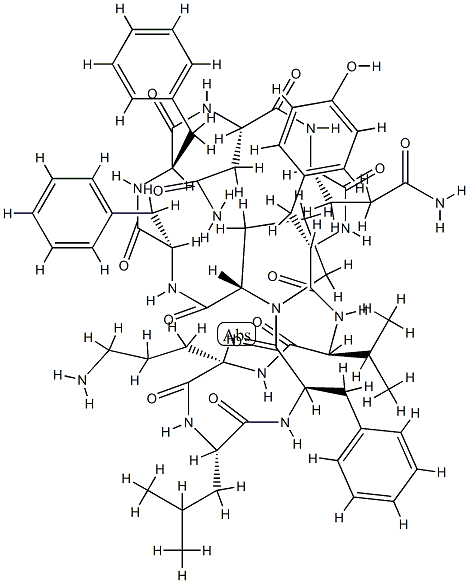Tyrocidine is (Probably the hydrochloride) Fine, crystalline needles that decompose at 240C; soluble in 95% alcohol, acetic acid, and pyridine; slightly soluble in water, acetone, and absolute alcohol; insoluble in ether, chloroform, and hydrocarbons; depresses surface tension; forms fairly stable colloidal emulsion in distilled water.
Tyrocidine is a family of eight cationic cyclic decapeptides produced by Bacillus brevis, first reported by Dubos in 1941. Tyrocidines exhibit broad antibiotic activity against Gram positive and negative bacteria and are the major component of the tyrothricin complex which is used for treatment of topical infections. Although the mechanism of action of tyrocidines is not fully understood, they are known to act by disturbing lipid bilayers of the bacterial cell membrane.
ChEBI: A homodetic cyclic decapeptide consisting of D-Phe, L-Pro, L-Phe, D-Phe, L-Asn, L-Gln, L-Tyr, L-Val, L-
rn, and L-Leu residues coupled in sequence and cyclised head-to-tail.

